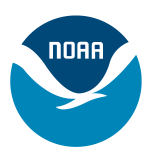- Industry: Government
- Number of terms: 30456
- Number of blossaries: 0
- Company Profile:
NOAA Coral Reef Conservation Program, National Oceanic and Atmospheric Administration, U.S. Department of Commerce
The specific matching of purine and pyrimidine base pairs in nucleic acids. This matching occurs because the structure of one base precisely fits with, and bonds to, another specific base. In DNA, adenine and thymine are complementary and form a base pair, as do cytosine and guanine. In pairing between DNA and RNA, adenine and uracil are complementary, and cytosine and guanine are complementary.
Industry:Natural environment
With two colours irregularly arranged, usually black and white.
Industry:Natural environment
A deep channel in the windward side of a coral reef through which water moves in and out of the reef.
Industry:Natural environment
A large group of fishes (infraclass Teleostei) which contains most of the bony fishes.
Industry:Natural environment
A small bryozoan heterozooid in which the zooecium and operculum form a beak-like, snapping structure that deters small predators.
Industry:Natural environment
A toxic liquid used to place oil in suspension in the water mass and promote its dispersal in order to accelerate break down by the environmen,t including bacterial decomposition. Dispersants are mixtures of solvents, surfactants, and other additives.
Industry:Natural environment
An autonomous (self-replicating) circular piece of DNA found outside the chromosome in bacteria. Plasmids carry information that give the bacteria resistance to antibiotics. They are often used in genetic engineering as cloning vectors to carry desired genes into organisms.
Industry:Natural environment
Any of various small openings or pores in an animal body, especially an opening resembling a mouth in many invertebrates; also a minute pore in the epidermis of the leaf or stem of a plant; plural is 'stomata'.
Industry:Natural environment
Earth-emitted radiation over thermal wavelengths: 3-15 micrometers. Used for satellite remote sensing because it can be used to monitor weather and oceanographic conditions 24 hours a day.
Industry:Natural environment
